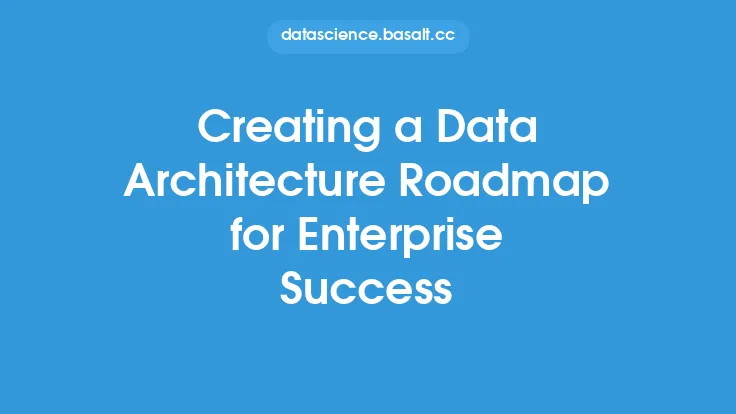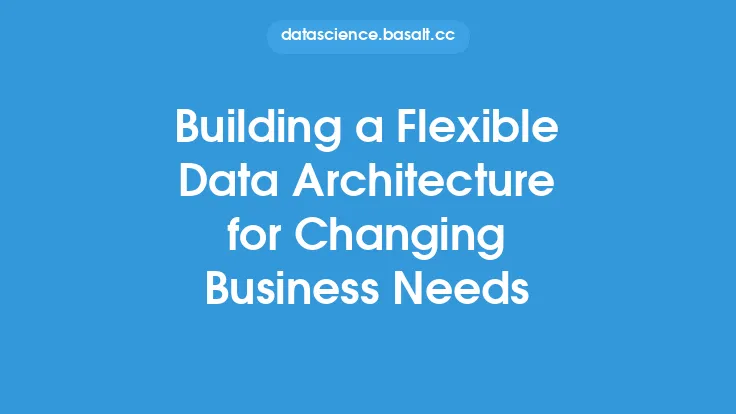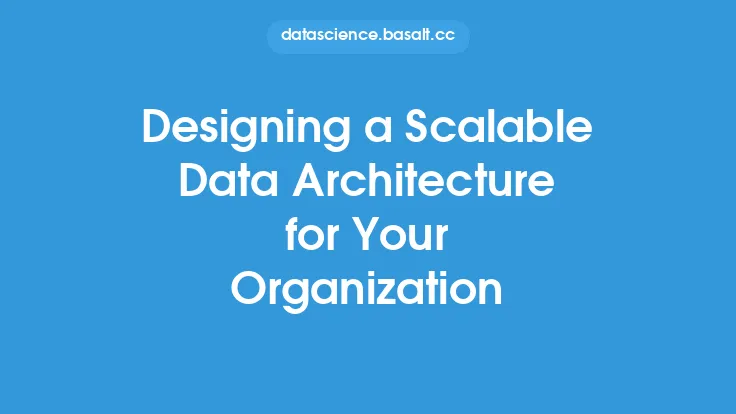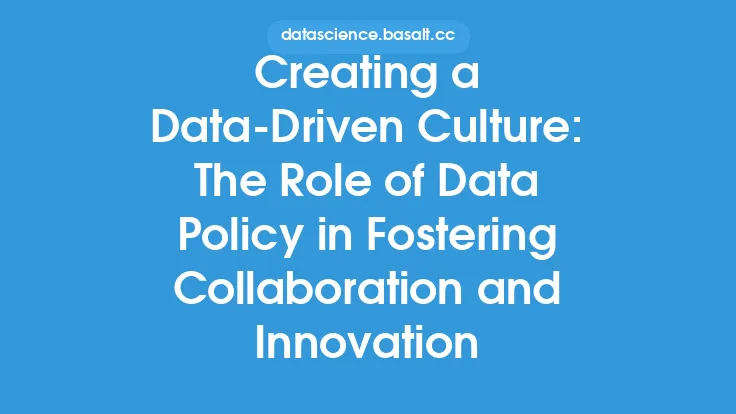Creating a comprehensive data architecture roadmap is crucial for organizations seeking to leverage their data assets for long-term success. A well-planned data architecture roadmap serves as a strategic guide, outlining the steps necessary to achieve a desired future state for an organization's data management capabilities. This roadmap is essential for ensuring that an organization's data architecture is aligned with its overall business strategy and is capable of supporting current and future business needs.
Understanding the Importance of a Data Architecture Roadmap
A data architecture roadmap is important because it provides a clear direction for an organization's data management efforts. It helps to ensure that all data-related initiatives are aligned with the organization's overall business strategy and are working towards a common goal. A well-planned roadmap also helps to identify potential roadblocks and opportunities, allowing organizations to proactively address challenges and capitalize on opportunities. Furthermore, a data architecture roadmap provides a framework for evaluating the effectiveness of an organization's data management efforts and for making adjustments as needed.
Key Components of a Data Architecture Roadmap
A comprehensive data architecture roadmap should include several key components, including a current state assessment, a future state vision, a gap analysis, and a prioritized roadmap. The current state assessment provides a detailed understanding of an organization's current data management capabilities, including its data assets, data systems, and data processes. The future state vision outlines the desired future state for an organization's data management capabilities, including the data assets, data systems, and data processes that will be required to support future business needs. The gap analysis identifies the differences between the current state and the future state, and the prioritized roadmap outlines the steps necessary to bridge these gaps.
Developing a Current State Assessment
Developing a current state assessment is an essential step in creating a data architecture roadmap. This assessment should include a detailed inventory of an organization's data assets, including its structured and unstructured data, as well as its data systems and data processes. The assessment should also evaluate the current state of an organization's data management capabilities, including its data governance, data quality, and data security practices. Additionally, the assessment should identify any data-related challenges or opportunities that the organization is currently facing.
Creating a Future State Vision
Creating a future state vision is also a critical step in developing a data architecture roadmap. This vision should be aligned with the organization's overall business strategy and should outline the data management capabilities that will be required to support future business needs. The future state vision should include a detailed description of the data assets, data systems, and data processes that will be required to support future business needs, as well as the data governance, data quality, and data security practices that will be necessary to ensure the integrity and security of the organization's data assets.
Conducting a Gap Analysis
Conducting a gap analysis is an essential step in developing a data architecture roadmap. This analysis should identify the differences between the current state and the future state, and should prioritize the gaps that need to be addressed. The gap analysis should evaluate the technical, operational, and financial feasibility of addressing each gap, and should identify the resources that will be required to bridge each gap. Additionally, the gap analysis should consider the potential risks and benefits associated with addressing each gap, and should prioritize the gaps based on their potential impact on the organization.
Prioritizing the Roadmap
Prioritizing the roadmap is a critical step in developing a data architecture roadmap. This prioritization should be based on the potential impact of each initiative on the organization, as well as the technical, operational, and financial feasibility of each initiative. The prioritization should also consider the potential risks and benefits associated with each initiative, and should prioritize the initiatives that will have the greatest impact on the organization. Additionally, the prioritization should consider the resources that will be required to implement each initiative, and should prioritize the initiatives that can be implemented with the available resources.
Implementing the Roadmap
Implementing the roadmap is the final step in developing a data architecture roadmap. This implementation should be guided by the prioritized roadmap, and should include the development of detailed project plans for each initiative. The implementation should also include the establishment of a governance structure to oversee the implementation of the roadmap, as well as the development of metrics to measure the progress and success of each initiative. Additionally, the implementation should include the identification of the resources that will be required to implement each initiative, and should include the development of a plan to acquire these resources.
Monitoring and Adjusting the Roadmap
Monitoring and adjusting the roadmap is an ongoing process that is essential to ensuring the success of a data architecture roadmap. This monitoring should include the regular evaluation of the progress and success of each initiative, as well as the identification of any challenges or opportunities that may arise during the implementation of the roadmap. The adjustment of the roadmap should be based on the results of this monitoring, and should include the reprioritization of initiatives as necessary. Additionally, the adjustment of the roadmap should consider any changes in the organization's business strategy or operating environment, and should ensure that the roadmap remains aligned with the organization's overall business strategy.
Technical Considerations
From a technical perspective, a data architecture roadmap should consider several key factors, including data storage, data processing, data integration, and data security. The roadmap should evaluate the organization's current data storage capabilities, including its relational databases, NoSQL databases, and data warehouses, and should identify any gaps or opportunities for improvement. The roadmap should also evaluate the organization's current data processing capabilities, including its batch processing, real-time processing, and data streaming capabilities, and should identify any gaps or opportunities for improvement. Additionally, the roadmap should consider the organization's data integration capabilities, including its data ingestion, data transformation, and data loading capabilities, and should identify any gaps or opportunities for improvement. Finally, the roadmap should evaluate the organization's data security capabilities, including its data encryption, data masking, and access control capabilities, and should identify any gaps or opportunities for improvement.
Best Practices
Several best practices can be applied to the development of a data architecture roadmap, including the establishment of a cross-functional team to oversee the development of the roadmap, the use of a structured methodology to guide the development of the roadmap, and the regular review and update of the roadmap to ensure that it remains aligned with the organization's overall business strategy. The roadmap should also be flexible and adaptable, and should be able to respond to changes in the organization's business strategy or operating environment. Additionally, the roadmap should be communicated clearly and consistently to all stakeholders, and should include a clear plan for implementing the roadmap and measuring its success. Finally, the roadmap should be aligned with the organization's overall business strategy, and should include a clear plan for ensuring that the data architecture is aligned with the organization's business goals and objectives.





